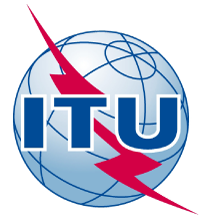|
The first-phase projects of the European
Fifth-Generation (5G) Infrastructure Public–Private Partnership (5G-PPP) began
in July 2015 with a joint meeting in Paris. The 5G-PPP is a joint initiative
between the European Commission and the European ICT industry to get research  investment focused on the challenges associated with having a communication
infrastructure capable of coping with all future demands by 2020. Some of the goals
of the 5G-PPP are providing 1,000 times higher wireless area capacity compared
with 2010, saving up to 90% of energy per service provided, reducing the
average service creation time cycle from 90 h to 90 min and facilitating very
dense deployments of wireless communication links to connect over 7 trillion wireless
devices serving over 7 billion people. The first call for projects held at the
end of 2014 has resulted in 19 projects being selected, addressing a rich cross
section of the research challenges leading to a 5G infrastructure by 2020. The
majority of the projects are focusing on radio and wireless technologies. These
projects represent the first phase of investment in the 5G-PPP challenges, and they
will be followed by a second set, building on the work from the first phase,
which is due to be called for in 2016 and launched in 2017.
investment focused on the challenges associated with having a communication
infrastructure capable of coping with all future demands by 2020. Some of the goals
of the 5G-PPP are providing 1,000 times higher wireless area capacity compared
with 2010, saving up to 90% of energy per service provided, reducing the
average service creation time cycle from 90 h to 90 min and facilitating very
dense deployments of wireless communication links to connect over 7 trillion wireless
devices serving over 7 billion people. The first call for projects held at the
end of 2014 has resulted in 19 projects being selected, addressing a rich cross
section of the research challenges leading to a 5G infrastructure by 2020. The
majority of the projects are focusing on radio and wireless technologies. These
projects represent the first phase of investment in the 5G-PPP challenges, and they
will be followed by a second set, building on the work from the first phase,
which is due to be called for in 2016 and launched in 2017. 
The International Telecommunications Union (ITU) has established the
overall road map for the development of 5G mobile and defined the term it will
apply to it as International Mobile Telecommunication 2020 (IMT-2020). With the
finalization of its work on the vision for 5G systems at a meeting of ITU Radio
Communications Working Party 5D, the ITU has now defined the overall goals,
process, and time line for the development of 5G mobile systems. This process
is now well underway within the ITU, in close collaboration with the government
and the global mobile industry. The next step is to establish detailed
technical performance requirements for the radio systems to support 5G, taking
into account the needs of a wide portfolio of future scenarios and use cases, and
then to specify the evaluation criteria for assessment of candidate radio-interface
technologies to join the IMT-2020 family.
Read the full article in IEEE Vehicular Technology Magazine, Volume 10, Issue 4, December 2015. |